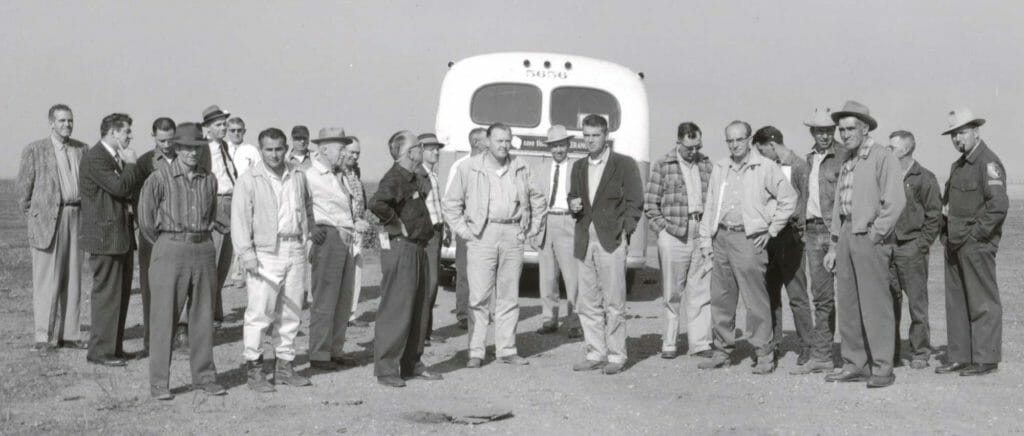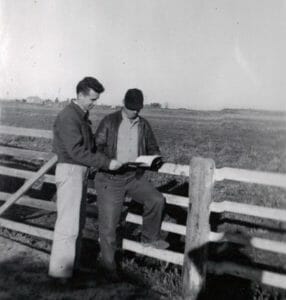Prior to World War II, Florin was well known for its grapes and strawberries. Almost all of the area now encompassed by the FRCD boundaries was in agricultural production, including dairies, orchards, grain and other feed. Reports indicate that 130 railcars loaded with Tokay grapes left the Florin station in 1941. Many farms were operated by families of Japanese descent. After the internment of 1942-1945, when many properties were neglected, the Florin community struggled to recover.

In the spring of 1950, the Florin Farm Center Committee for Organization of a Soil Conservation District, a committee of Florin farmers, submitted a proposal for the formation of the Florin Soil Conservation District to the Sacramento County Board of Supervisors, requesting approval and submission of that proposal to the State Soil Conservation Commission. The specific intents of the new soil conservation district would be efficient use of irrigation water, improved drainage, flood control and other land improvements. With the necessary approvals, the committee met with other agricultural interests and local landowners until they had thoroughly identified all properties wanting to be within the District boundaries.

On June 23, 1953, a public election determined the establishment of the Florin Soil Conservation District (FSCD) and its first five member board of directors. Those directors were: George E. Carlisle, Thomas H. Young, John E. Mensch, Chris Feickert and J.E. Jensen. Perhaps portending the future FRCD's focus, the very first work plan, written in 1953, identified the importance of wise irrigation use and the necessity in not depleting the area's underground water supplies. In 1954, the board executed a Memorandum of Understanding with the USDA, beginning a long and productive partnership.
During the first years of the organization, two additions were made to the boundaries, a region around Franklin and the Waegell addition, a property near Florin Road, Grant Line and Sunrise Blvd. The Franklin addition expanded the District into Elk Grove. With grant money, equipment was purchased for water management projects, such as irrigation and drainage improvements.

The FRCD also had a wildlife program, coordinating the sale of plants grown by the residents of the Preston School of Industry, Sacramento County's Boy's Ranch and Folsom Prison and planting habitat for game birds and rabbits. As Sacramento grew, the Florin area transitioned from a farm community into a Sacramento neighborhood. The FRCD transitioned too, moving its headquarters and focus south to Elk Grove.
California Resource Conservation Districts are authorized by Division 9 of the California Public Resources Code. Chapter 3, Article 9 of Division 9 details the general powers of a district. An expansion of those powers was the impetus in changing the names of the Soil Conservation District to Resource Conservation Districts in 1971.